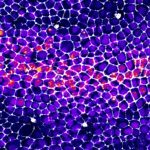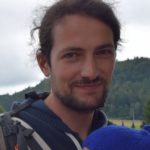Link to Pubmed [PMID] – 31386857
Curr. Biol. 2019 Aug;29(15):R762-R774
Cell competition is a widespread process leading to the expansion of one cell population through the elimination and replacement of another. A large number of genetic alterations can lead to either competitive elimination of the mutated population or expansion of the mutated cells through the elimination of the neighbouring cells. Several processes have been proposed to participate in the preferential elimination of one cell population, including competition for limiting extracellular pro-survival factors, communication through direct cell-cell contact, or differential sensitivity to mechanical stress. Recent quantitative studies of cell competition have also demonstrated the strong impact of the shape of the interfaces between the two populations. Here, we discuss the direct and indirect contribution of mechanical cues to cell competition, where they act either as modulators of competitive interactions or as direct drivers of cell elimination. We first discuss how mechanics can regulate contact-dependent and diffusion-based competition by modulating the shape of the interface between the two populations. We then describe the direct contribution of mechanical stress to cell elimination and competition for space. Finally, we discuss how mechanical feedback also influences compensatory growth and triggers preferential expansion of one population.

